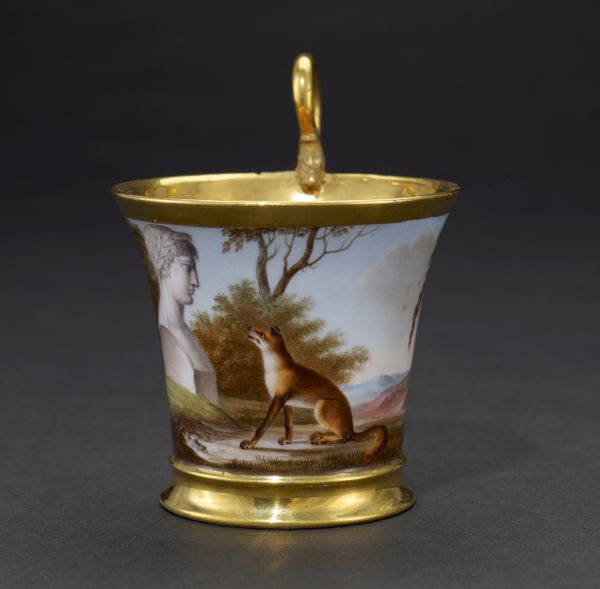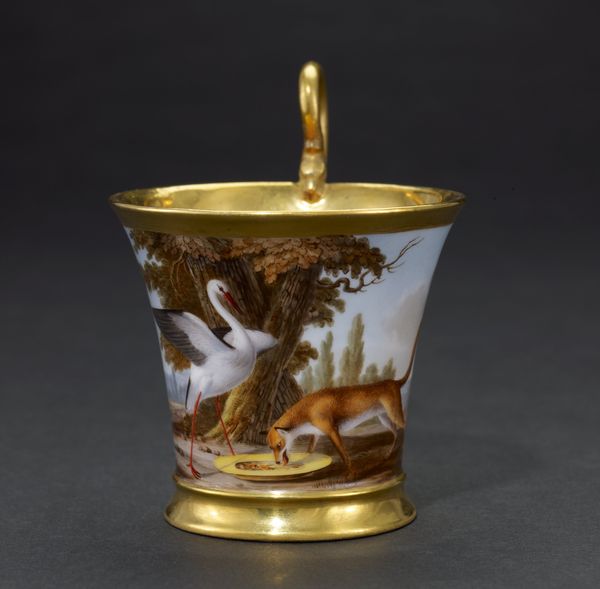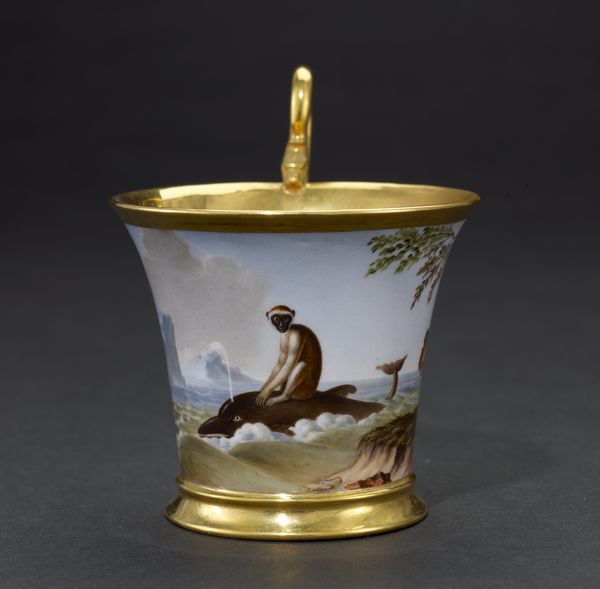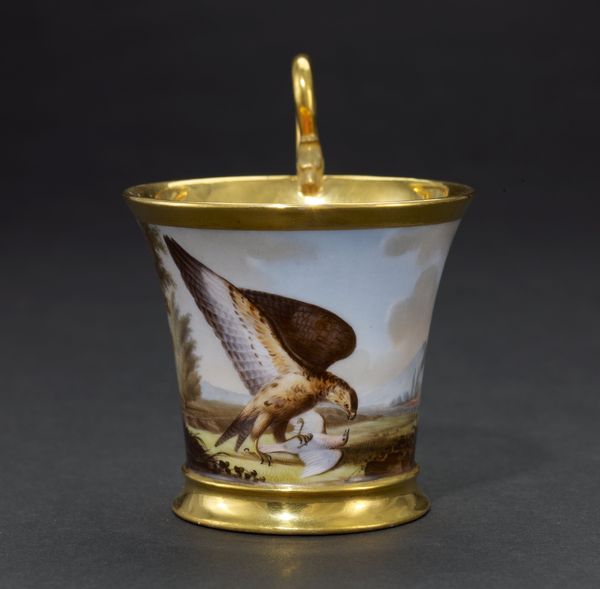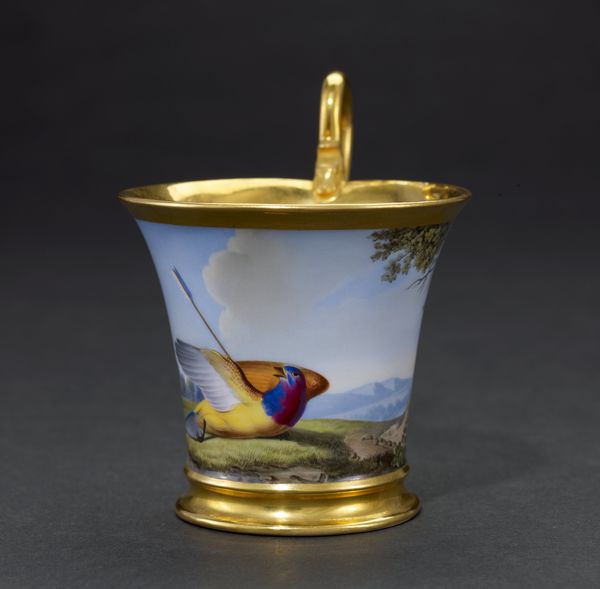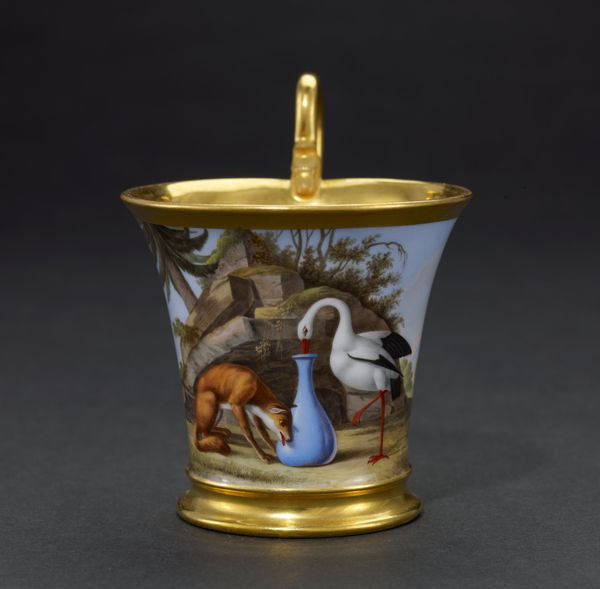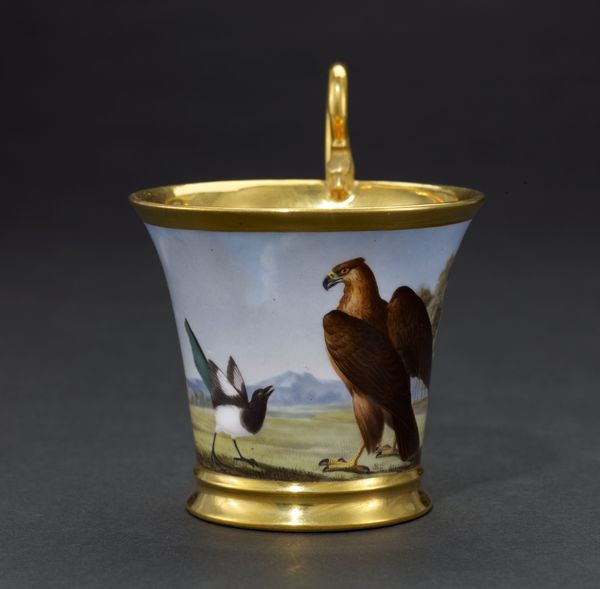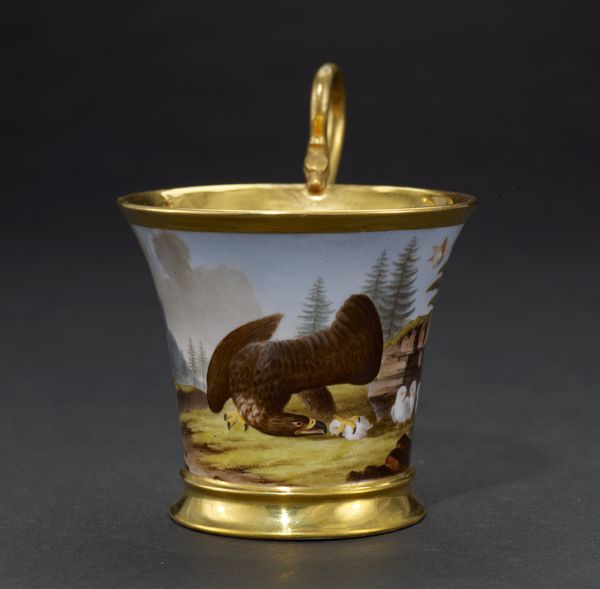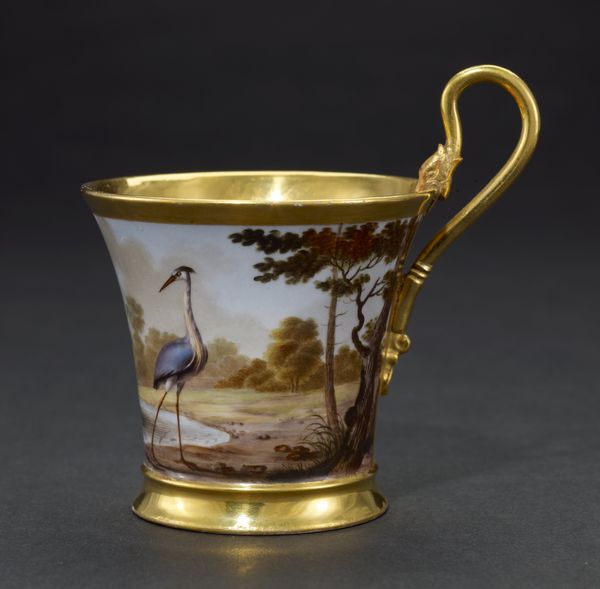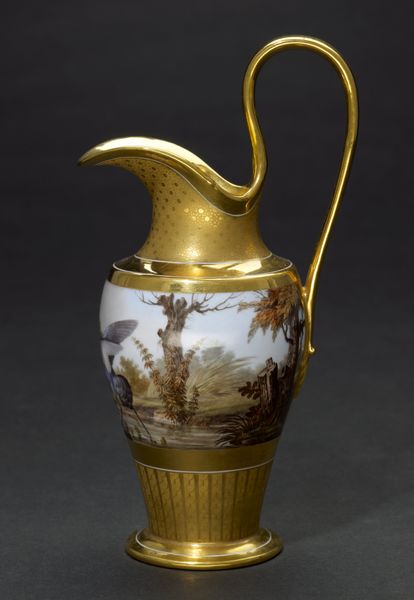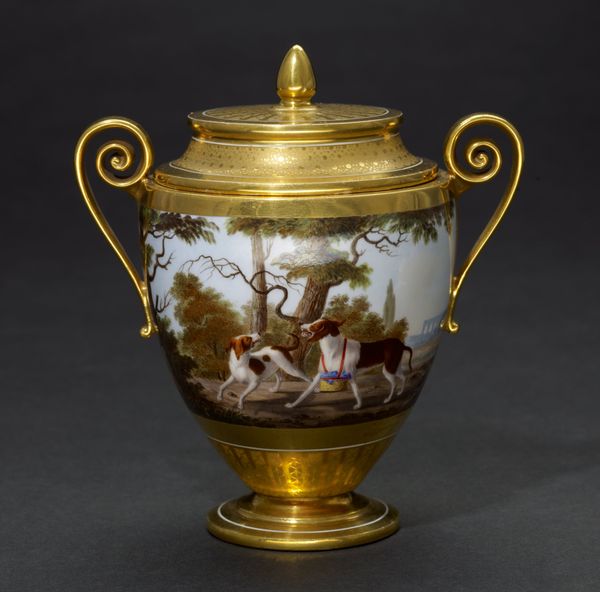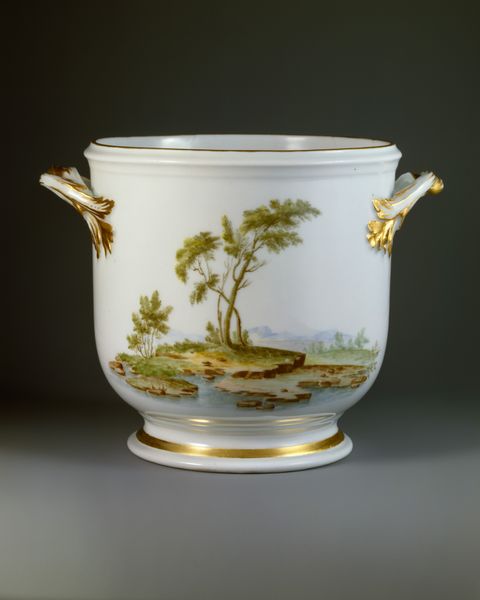
Cup from a tea service for twelve 1807 - 1808
0:00
0:00
tempera, painting, ceramic, porcelain
#
tempera
#
painting
#
landscape
#
ceramic
#
porcelain
#
ceramic
#
genre-painting
Dimensions: 4 5/16 x 4 1/2 x 3 3/8 in. (10.95 x 11.43 x 8.57 cm)
Copyright: Public Domain
Curator: This diminutive cup, part of a tea service for twelve, dates back to around 1807-1808, and we can attribute its creation to Christophe-Ferdinand Caron. It’s currently held in the collection of the Minneapolis Institute of Art. Editor: My first impression is one of refined whimsy. The gold trim and delicate porcelain feel luxurious, yet the playful landscape scene gives it a lighthearted touch. It’s precious but not overly serious. Curator: It’s interesting you pick up on that interplay. Caron used tempera to paint these delicate genre scenes directly onto the porcelain surface, blurring the lines between what we consider high art and decorative craft. The act of decorating this piece speaks volumes of consumption rituals among the elite class. Editor: Absolutely. The image itself draws upon deeply embedded allegories. The hare and tortoise—a classical fable—immediately spring to mind. They embody the cultural values assigned to diligence versus natural gifts, reflecting the anxieties of that period concerning social mobility and aspiration. Curator: Right. The context is crucial here. Porcelain production in the early 19th century was a highly specialized craft. Consider the skilled labor involved in its manufacture and painting, the social dynamics of these workshops, and how such objects were circulated. All of that infrastructure becomes part of understanding this cup. Editor: And think about the landscape! While seemingly pastoral, the iconography of swiftness and slowness, nature, and the controlled mark of human impact speaks volumes. Even those distant hillsides resonate with historical and mythological weight, referencing an ongoing tradition within European art and literature. Curator: Seeing it this way underscores that even everyday objects like a teacup can be powerful cultural documents. Editor: Indeed. It really causes me to reconsider how such seemingly small scenes, rendered upon even smaller surfaces, can tell big stories.
Comments
No comments
Be the first to comment and join the conversation on the ultimate creative platform.
